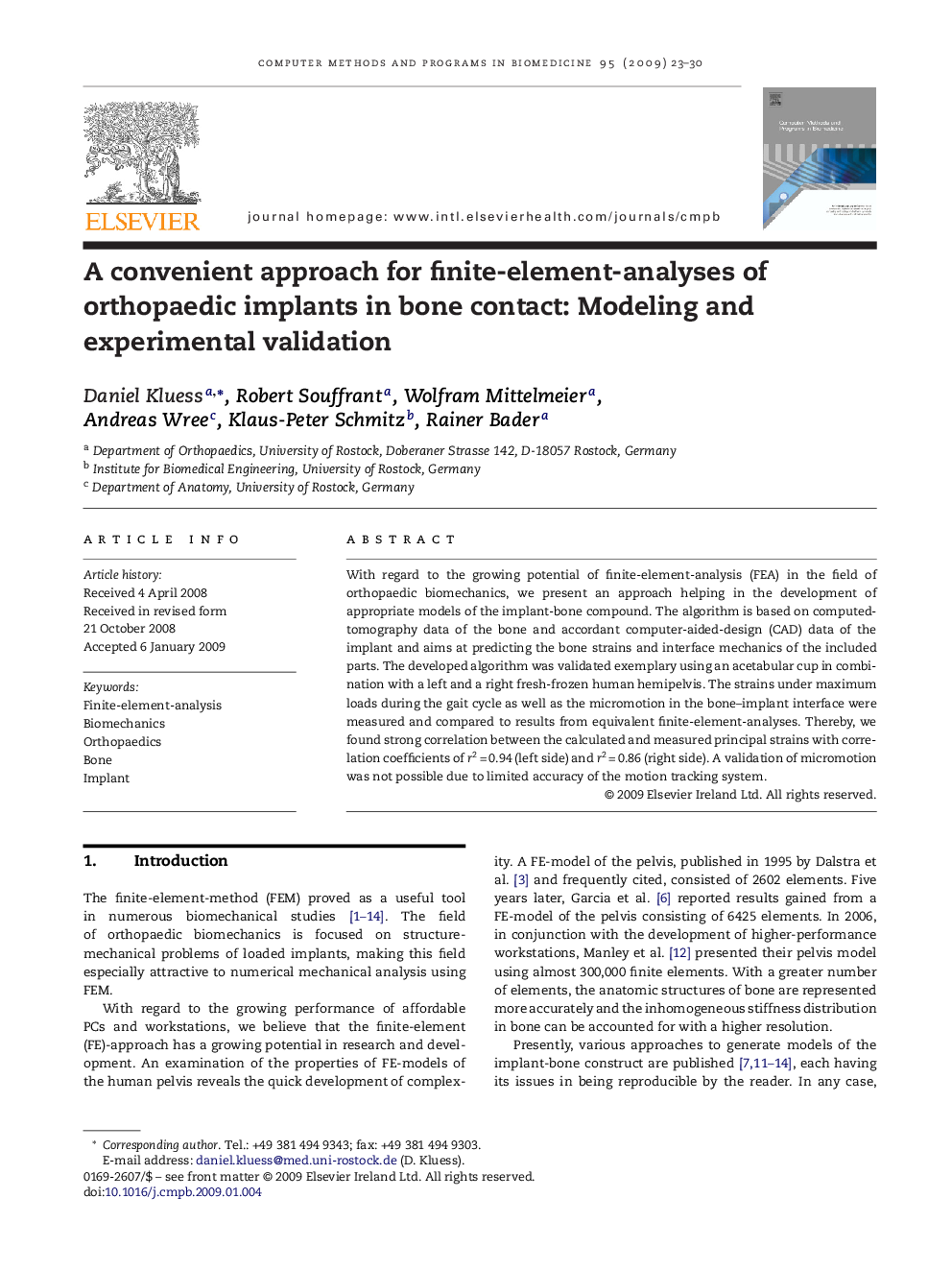| Article ID | Journal | Published Year | Pages | File Type |
|---|---|---|---|---|
| 467112 | Computer Methods and Programs in Biomedicine | 2009 | 8 Pages |
With regard to the growing potential of finite-element-analysis (FEA) in the field of orthopaedic biomechanics, we present an approach helping in the development of appropriate models of the implant-bone compound. The algorithm is based on computed-tomography data of the bone and accordant computer-aided-design (CAD) data of the implant and aims at predicting the bone strains and interface mechanics of the included parts. The developed algorithm was validated exemplary using an acetabular cup in combination with a left and a right fresh-frozen human hemipelvis. The strains under maximum loads during the gait cycle as well as the micromotion in the bone–implant interface were measured and compared to results from equivalent finite-element-analyses. Thereby, we found strong correlation between the calculated and measured principal strains with correlation coefficients of r2 = 0.94 (left side) and r2 = 0.86 (right side). A validation of micromotion was not possible due to limited accuracy of the motion tracking system.
